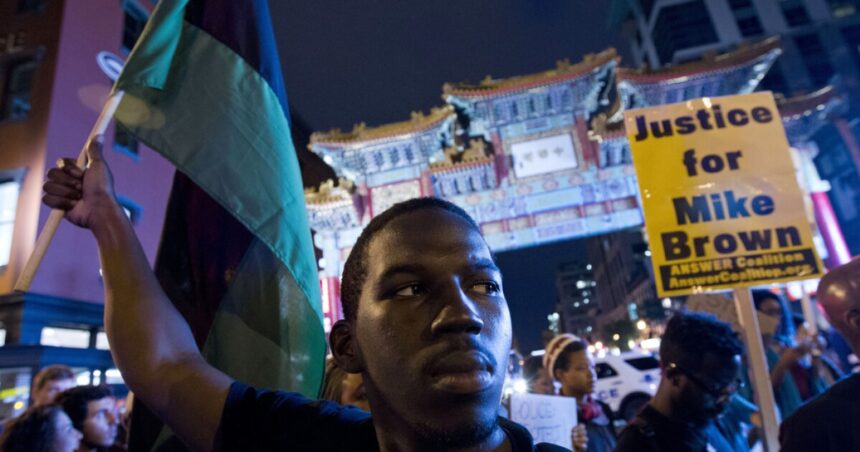On Aug. 9, 2014, Michael Brown Jr. was shot and killed in Ferguson, Missouri, by a White police officer.
Witnesses on the scene said Brown had his hands up when he was shot, while the officer claims he was being attacked by Brown.
But the ensuing weeks of chaotic protest, revelations about the local police department and subsequent police killings captured the country’s attention and changed policing nationwide.
“As I tell my officers, the photo op days are over with,” said Troy Doyle, chief of the Ferguson Police Department. “We can’t just go to a basketball court. Somebody filming us playing basketball with the kids. To me, that’s not community engagement.”
Doyle has been the Ferguson Police chief for a little over a year, but as a longtime resident of North St. Louis County, he says the reckoning was long overdue.
RELATED STORY | Body camera video shows fatal shooting of Black airman by Florida deputy in apartment doorway
“There was always an underlying current that was going on, the feeling among, especially African American people in the community, there were certain areas that you didn’t drive in, you know, Ferguson being one of them, and some of the other surrounding municipalities because you knew that you will be a target,” Doyle said.
Many of the changes recently seen in policing — body cameras, police review boards, de-escalation training — can be partially traced back to the killing of Michael Brown.
“I think that what came out of 2014 actually made law enforcement better,” Doyle said.
DOJ data shows more than 80% of local law enforcement agencies wear body cameras.
More than half of US states require some form of de-escalation training, which, studies say, can reduce violence.
“I think we’re in a moment of evolution and people continuing to do the work to hold police accountable and to truly make sure that Mike Brown’s death was not in vain and that Black lives truly do matter,” civil rights attorney Mawuli Davis said.
RELATED STORY | Deputy charged in Sonya Massey’s fatal shooting worked for 6 agencies in 4 years, records show
But as we see the killings of Sonya Massey, Roger Fortson and others at the hands of police, activists say their work is far from over.
“The fact that we still continue to see so many cases of excessive, unconstitutional use of force of law enforcement on marginalized people, especially people of color, tells you we still have work to do,” civil rights attorney Ben Crump said.
The city of Ferguson has seen significant change over the last 10 years from policing to government.
“We brought community policing, court reforms, body cameras for every single officer. As county prosecutor, we expanded treatment programs for people struggling with mental health and substance abuse,” said Wesley Bell, former Ferguson City Council member, county prosecutor and recent winner of the Democratic primary for Missouri’s 1st congressional district.
“In 2023 alone, we handled over 30,000 something calls for police services in the city of Ferguson, which means that’s a lot of citizen contacts. Out of that, only less than 1% resulted in the use of force,” Doyle said.
Doyle also says just four officers from the Ferguson Police Department roster in 2014 remain on the current police force.
While police use of force is moving in the right direction in Ferguson, the number of police killings by force per year has hovered in the same area for nearly the last decade nationwide. Since 2020, police have killed more than 1,000 per year, and the country is on pace to hit that number again.





